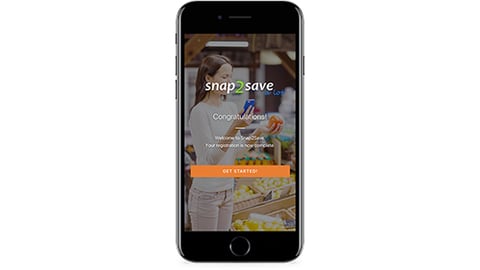Food Retailers Can Provide a Nudge in the Right Direction
In the decade since the publication of Richard Thaler and Cass Sunstein’s “Nudge: Improving Decisions About Health, Wealth and Happiness,” nudge theory has enjoyed unprecedented success. Predicated on the idea that individuals respond better to indirect suggestion than outright commands, nudge theory is commonly used as a way of subtly influencing our behavior toward positive choices. The idea has gained such traction, in fact, that many governments around the world have created “nudge units” in a bid to tackle thorny issues like obesity and the climate change emergency.
Just as government entities are exploring how nudge theory can be used to tackle big social challenges, grocers have a similar opportunity with regard to their customers’ dietary choices. With even a few small changes, grocers can help to nudge shoppers in the direction of healthier food decisions. But to do this will require a good knowledge of their customers – what the grocery industry calls behavioral and customer data science. As is true in many other successful solutions to health challenges, there is no “one-size-fits-all” response.
What follows are some of my favorite nudges that grocery retailers might easily implement to aid customer health with the benefit of behavioral and customer data science:
Tackle the temptation of treats
In 2018, scientists published their findings from a seminal experiment in which some of the United Kingdom’s leading retailers removed snacks and candy from the checkout. Purchases of sweets, chocolate and salty snacks subsequently fell by 76% when compared with supermarkets that kept those items in place. In other words, just changing the location of products can nudge shoppers into healthier decision-making.
Give healthier products more in-store space
One particularly innovative nudge was discovered by a group of U.S. scientists in 2017, which found that introducing an area in a shopping cart specifically for fruit and vegetables led to higher sales of those items. The amount of space dedicated played a role. In one another study, increasing the size of the partition from 35% to 50% of the cart increased average customer spend on fruit and vegetables from $14.97 to $17.54 – an increase of 17%.
Normalize fruit and vegetable purchases
Change4Life, a campaign run by the United Kingdom’s Department of Health, aims to nurture healthier lifestyles. A 2015 study commissioned as part of the campaign suggests that “normalizing” the purchase of fruit and vegetables goes a long way toward influencing shoppers. When shopping carts displayed statistics showing how many other shoppers purchased fruit and vegetables, spending in those categories rose by 12.4%. Social-norm communication like this is a classic form of nudge that targets our deep-seated need for conformity (in this case, in a very positive way).
Use cartoon characters to encourage healthy eating among children
Obesity isn’t just a problem for adults. To help tackle childhood obesity, the Food Dudes program put cartoon role models at the center of its in-school campaigns. One London-based study found that fruit consumption among the poorest eaters increased from 4% to 68%, while an unexposed control group showed no change. While this may not show increased consumption in a retail context, the concept of using accessible and entertaining imagery and characters to promote healthy eating out of store should be equally applicable in-store. Using cartoon characters has long been a method of coercing children to eat unhealthily. The Food Dudes programs take the same behavioral rules and apply them to earn healthier outcomes.
Assess the new nudge on the block
New nudges are always popping up. In November 2019, before the pandemic, a new DnaNudge shop opened in London. Combining a wristband and app, DnaNudge aims to help users make better food-shopping choices based on their DNA and lifestyle. Food is scanned using the wristband, which will then flash red or green based on its suitability for the owner’s biological profile. A product with high salt content will flash red for a user with high blood pressure, for instance. DnaNudge, which was recently showcased at CES 2020, is collaborating with U.K. retailer Waitrose to study the effects of this approach on prediabetic customers. A big question remains for this and other technology innovations, however: Which of your customers will be open to them?
Nudging shoppers toward a healthier future
It’s a sad fact that non-communicable diseases, such as heart disease, cancer and diabetes, still account for around 70% of global deaths. Furthermore, many of these deaths are due to factors that the victim may be able to influence, with tobacco use, alcohol abuse, diet, and inactivity all contributing to that number.
While grocers might not have a direct responsibility for commanding their customers to eat better, they do have the opportunity to play a huge role. As behavioral and customer data science becomes better known around the world, and savvy customers expect grocers to make it easier for them to make healthier choices, expect a tipping point soon, at which the nascent nudge becomes the new normal.







